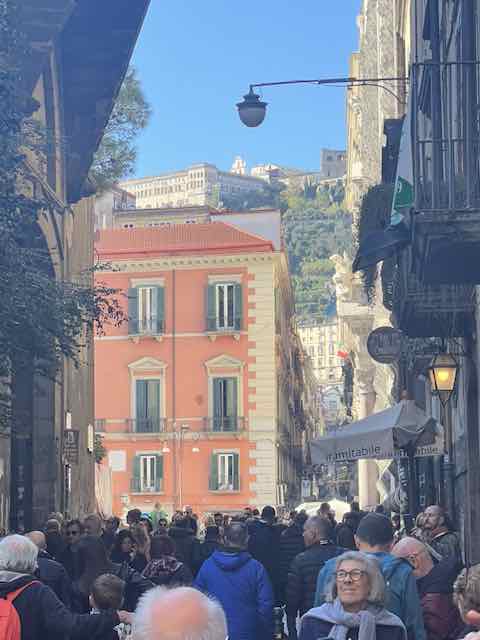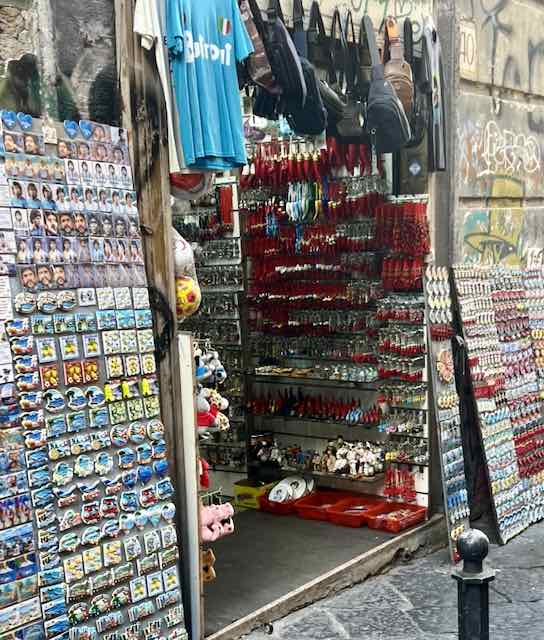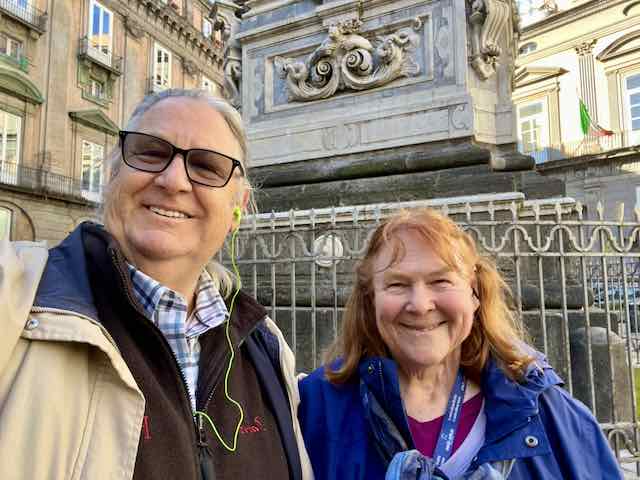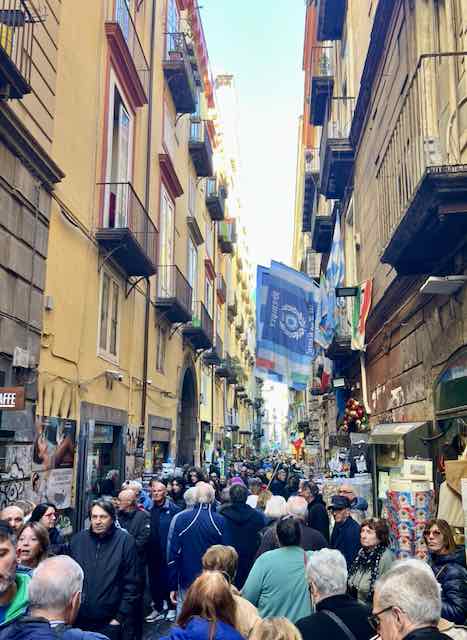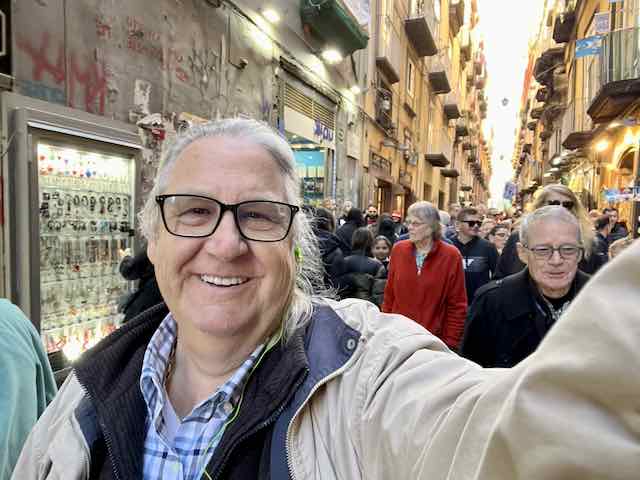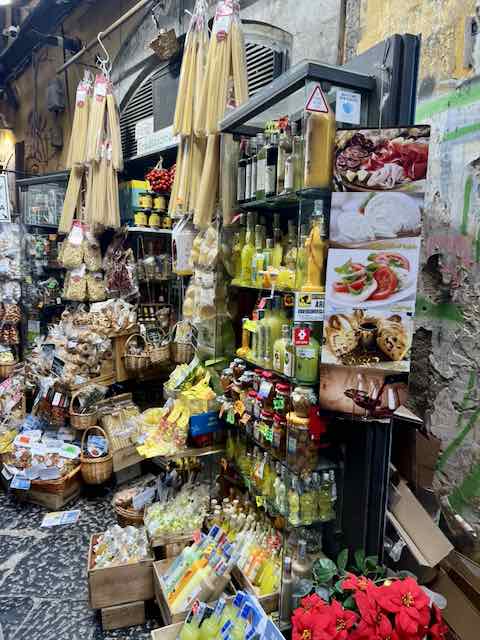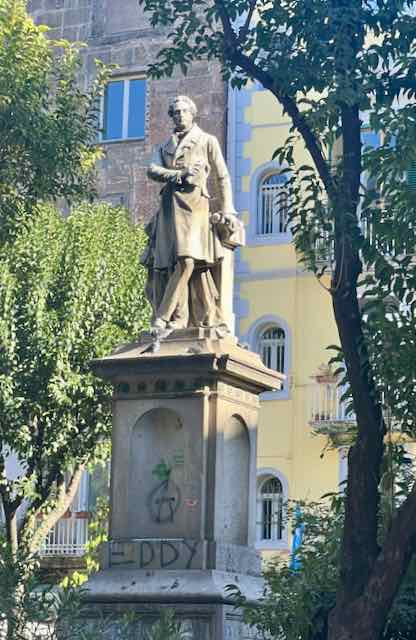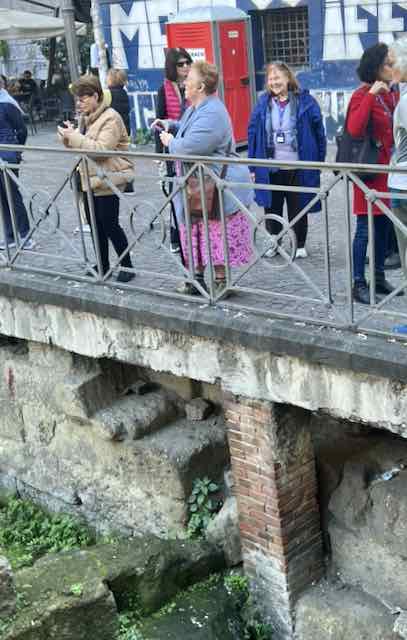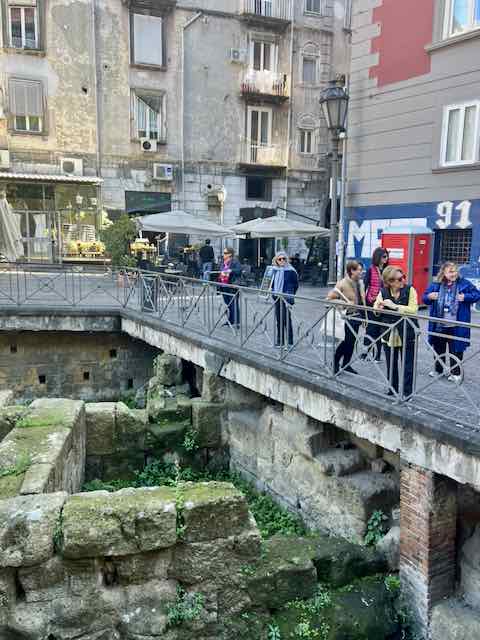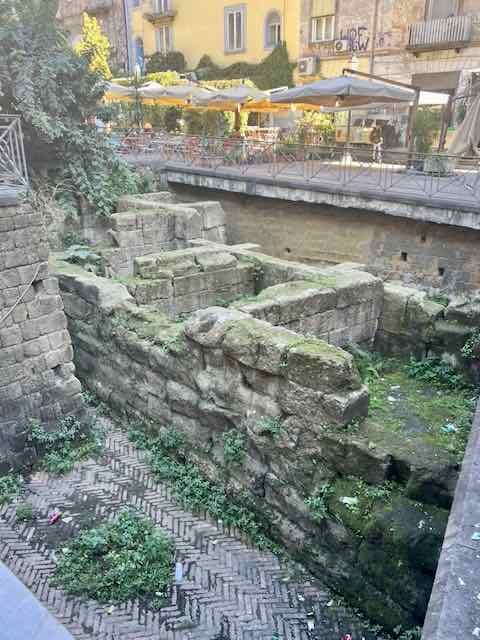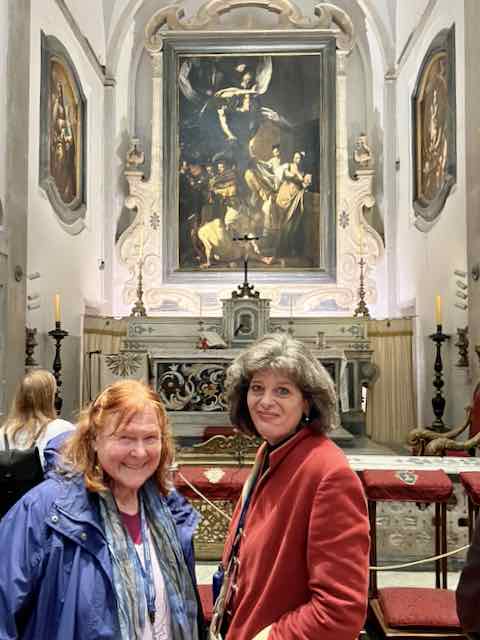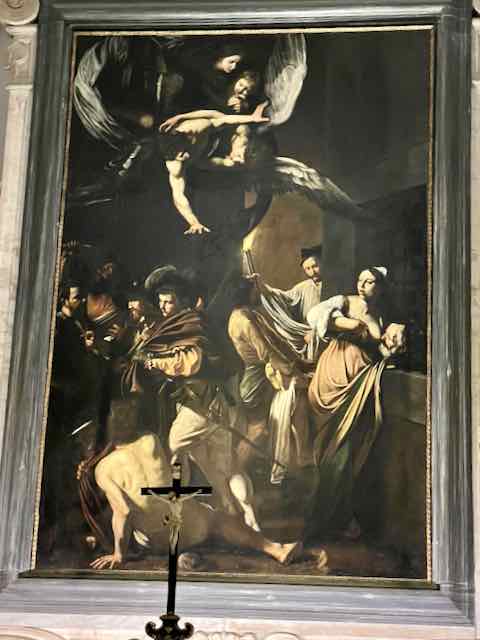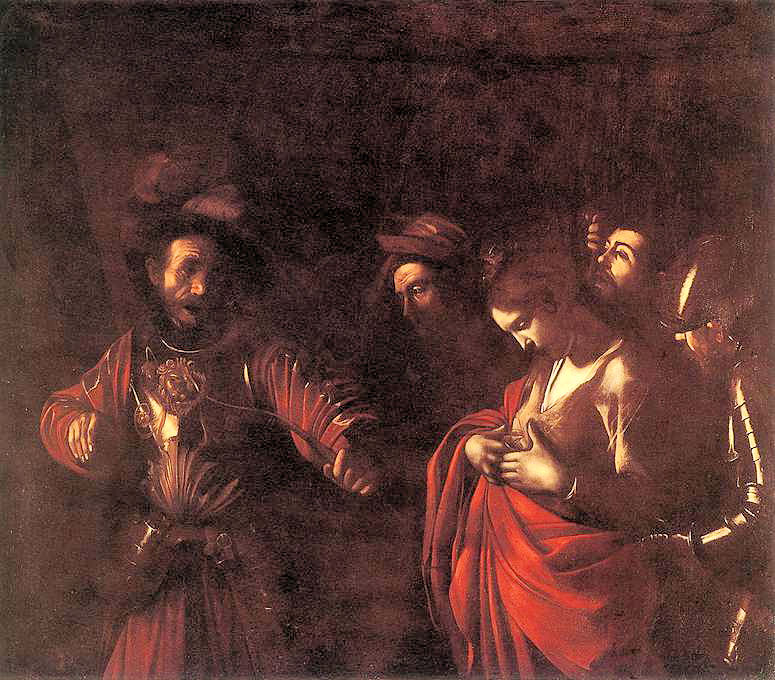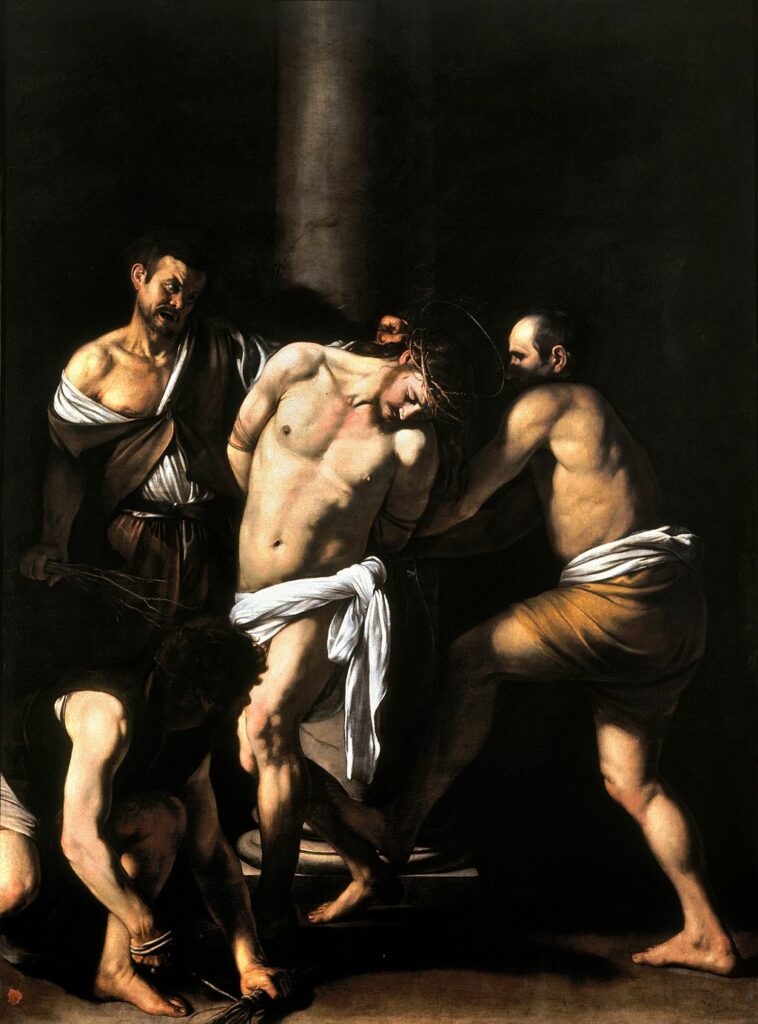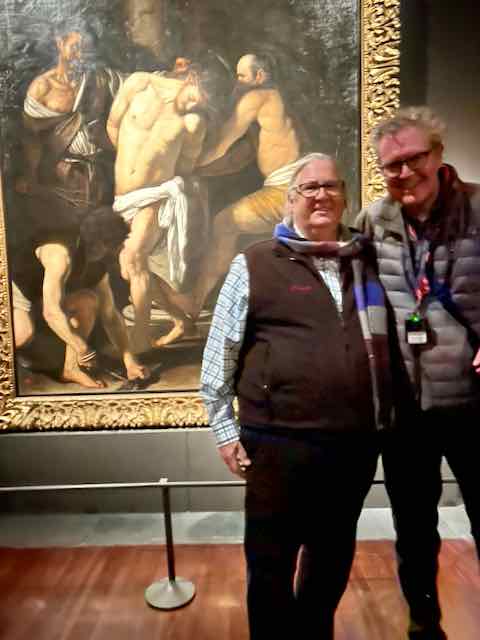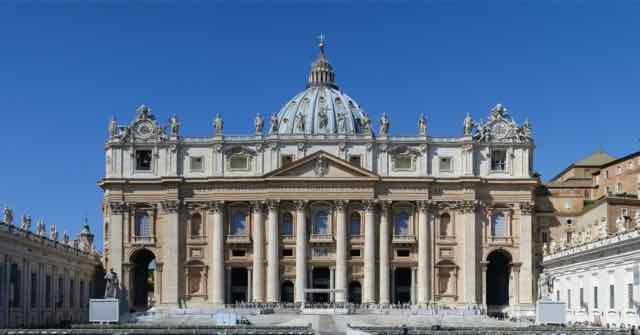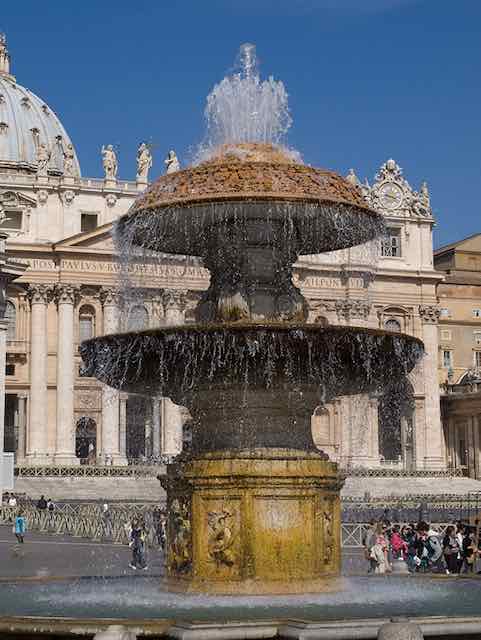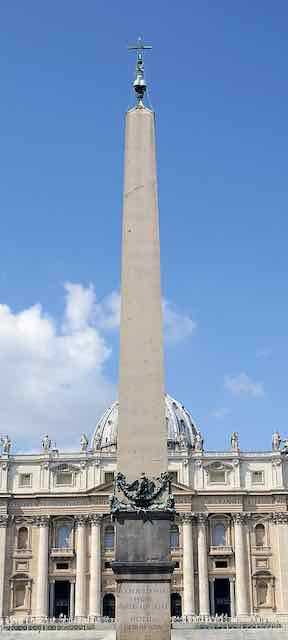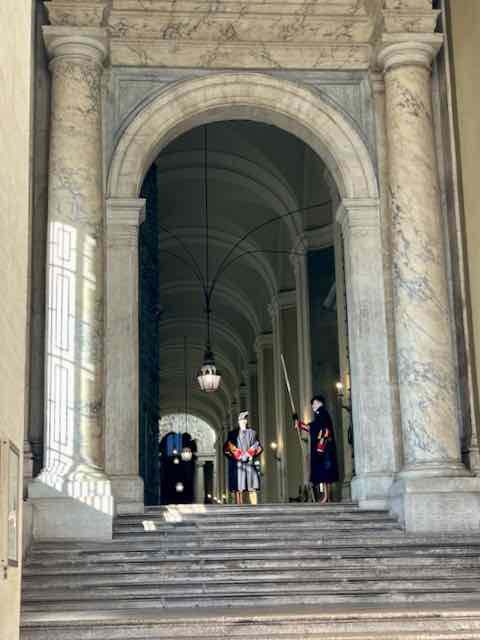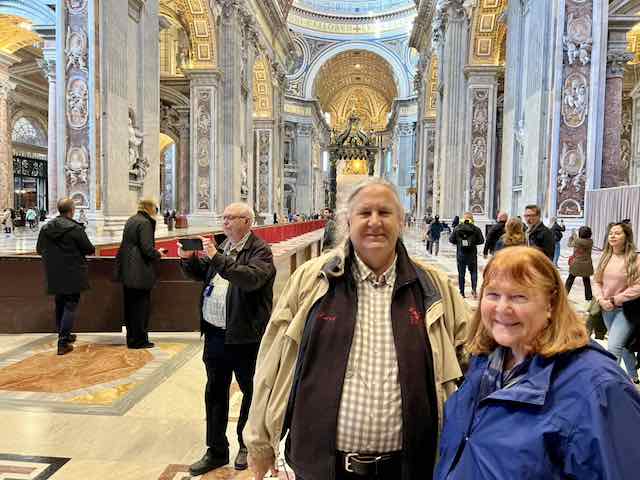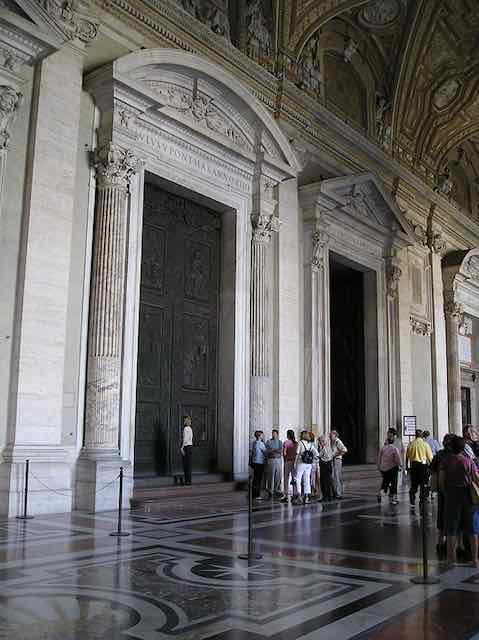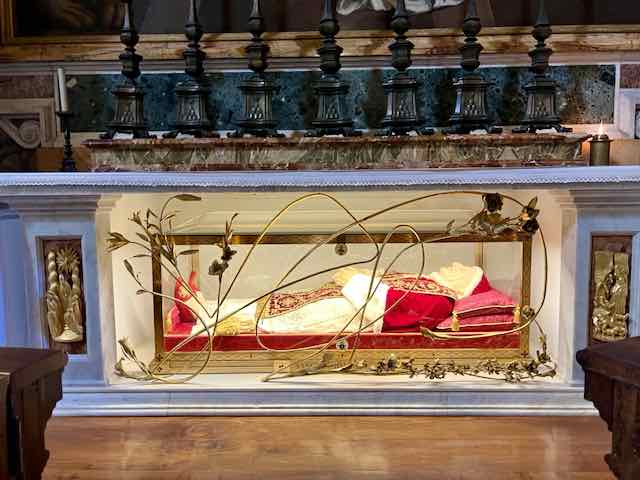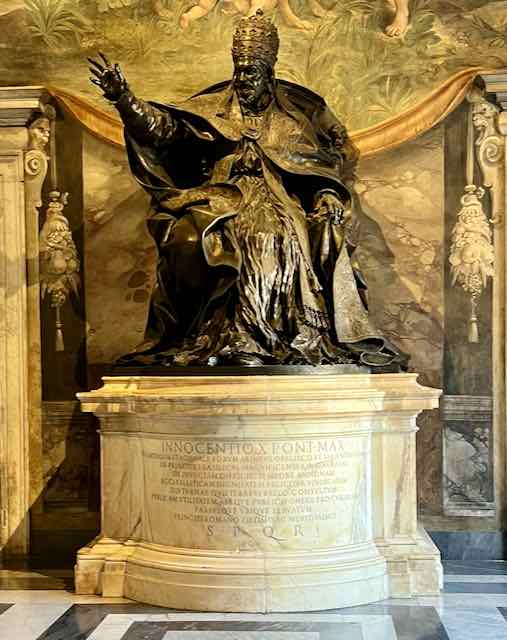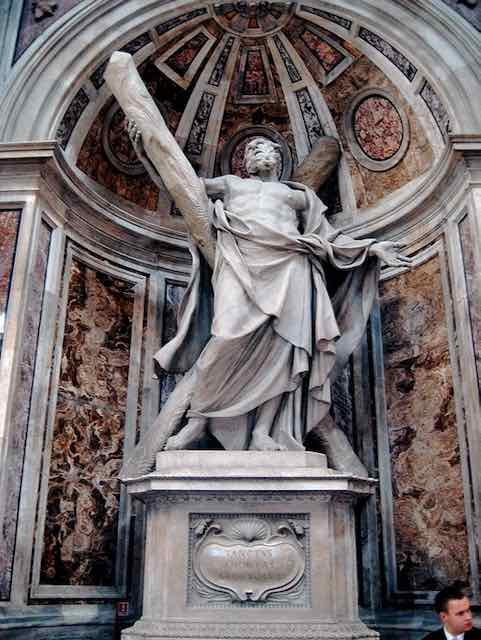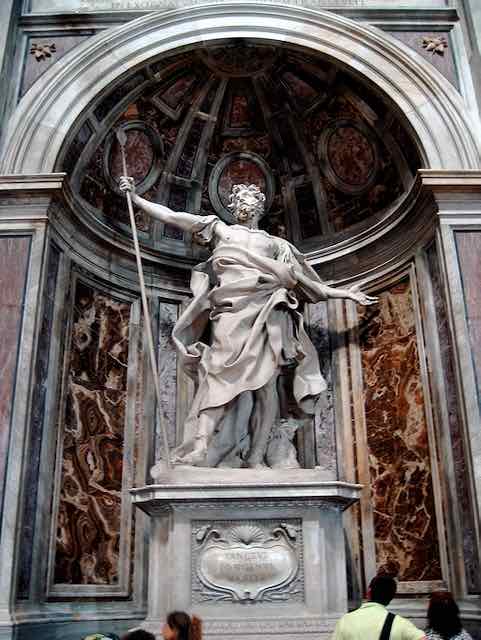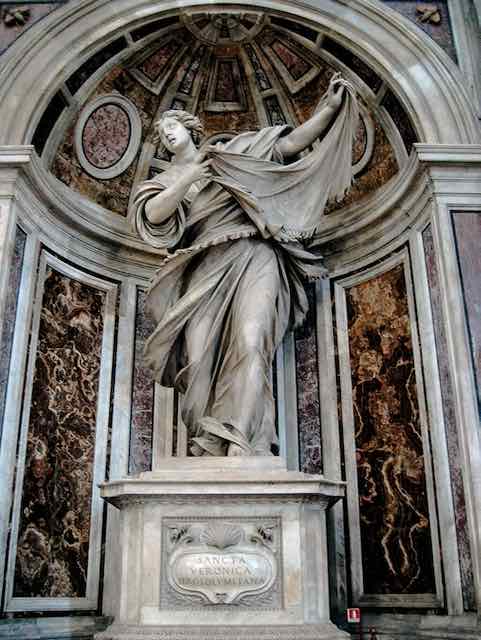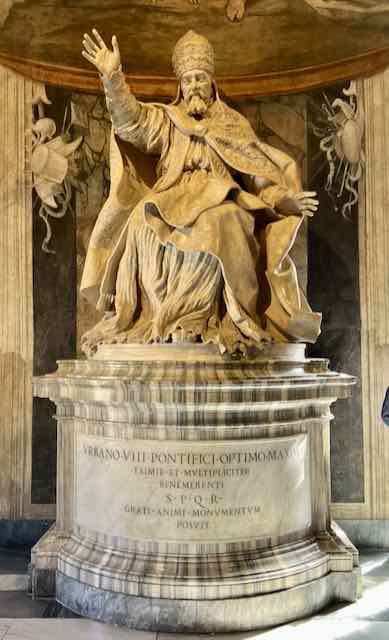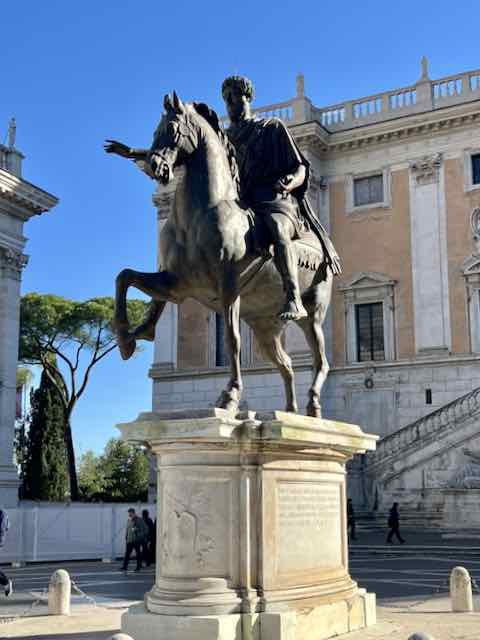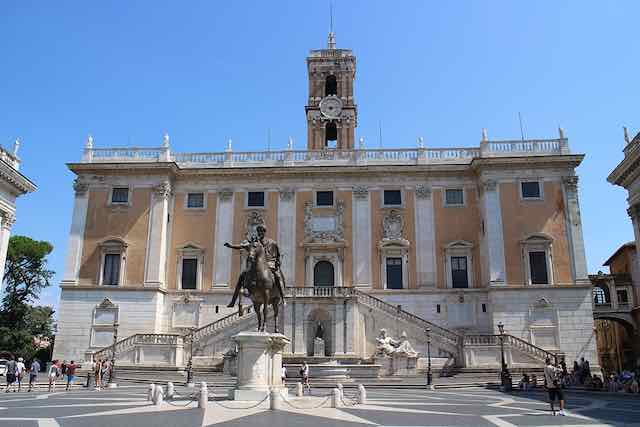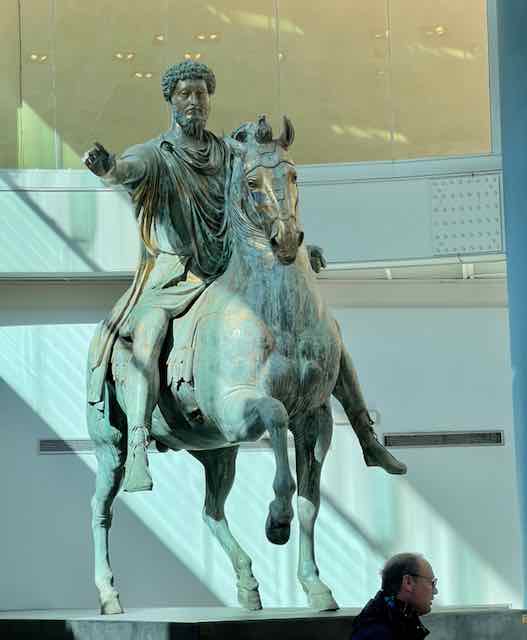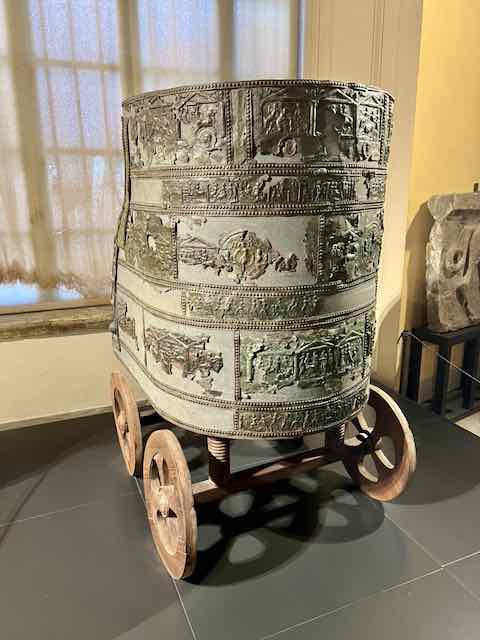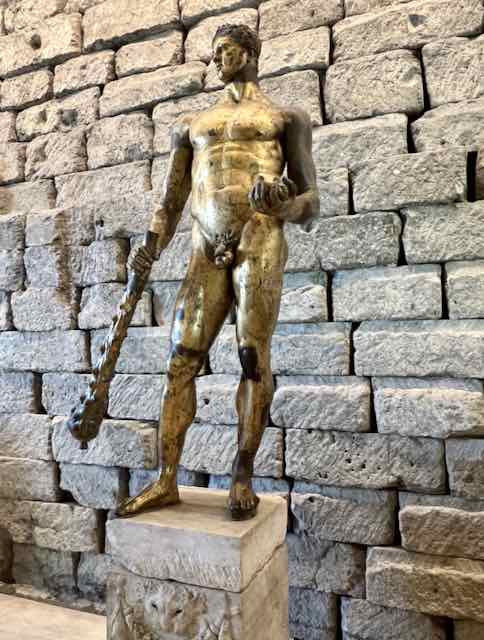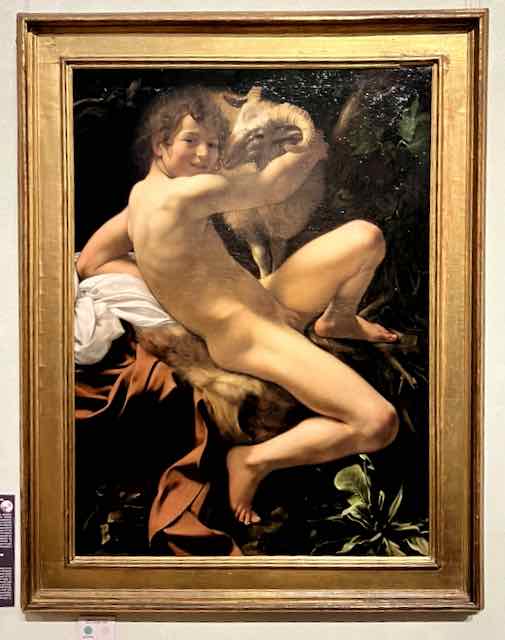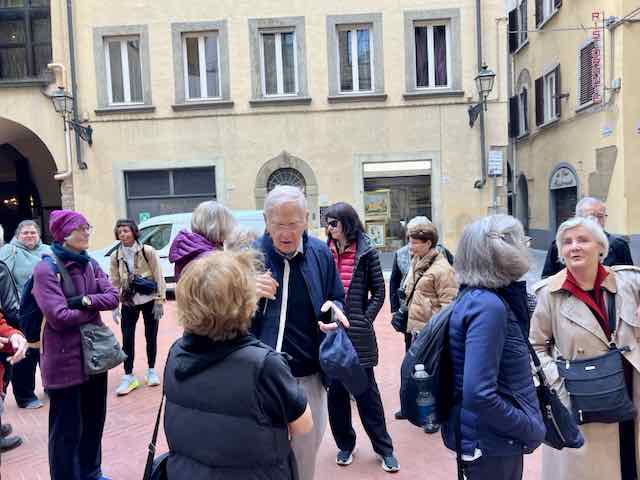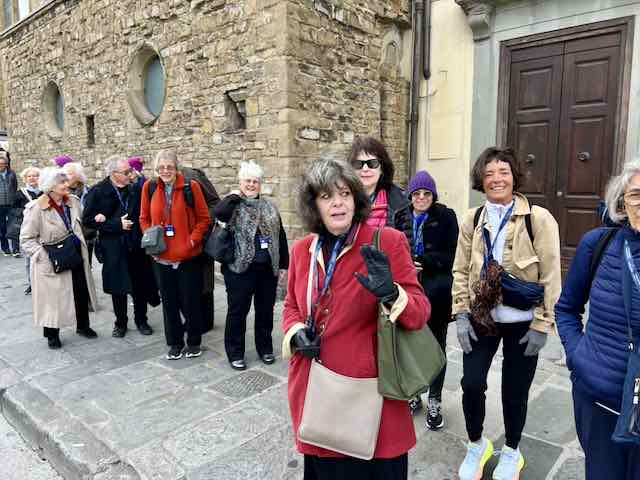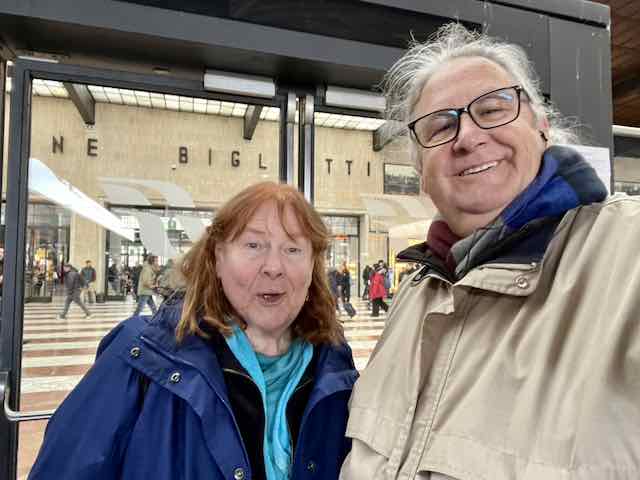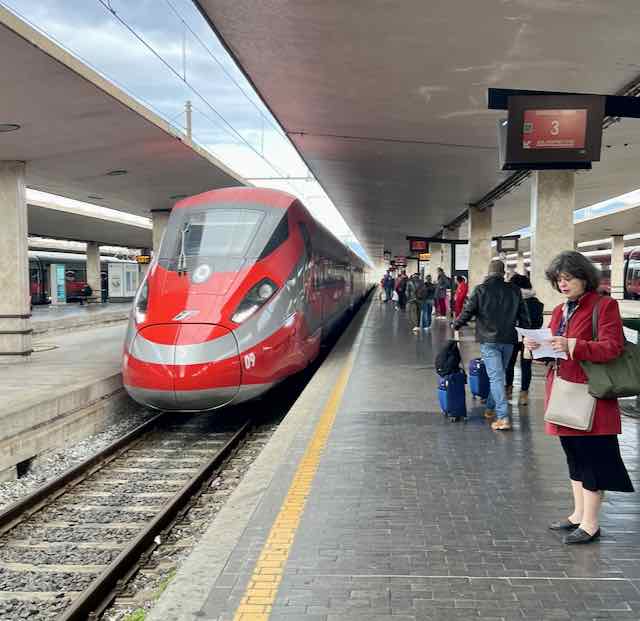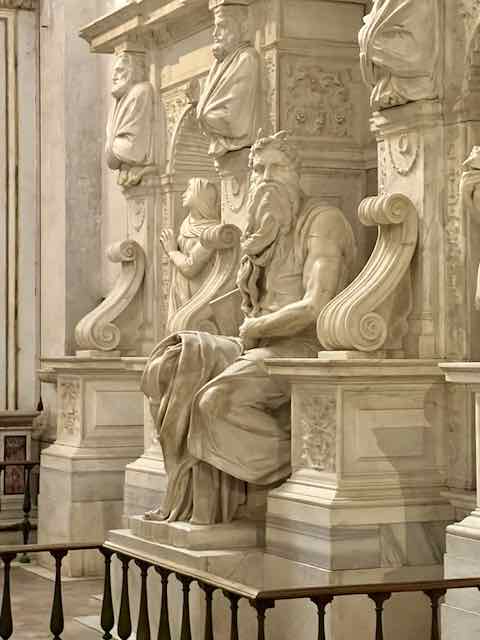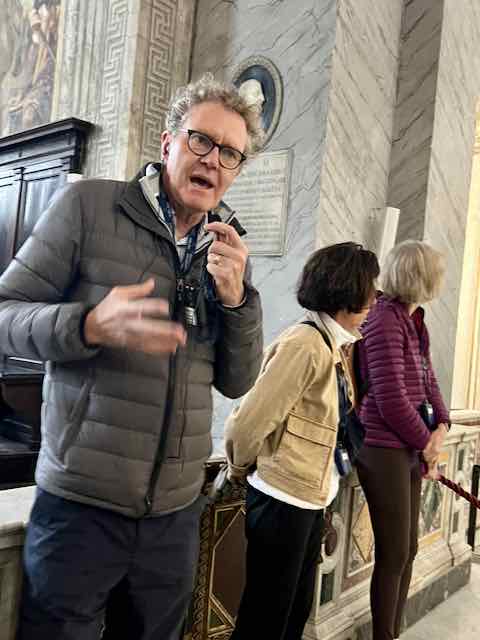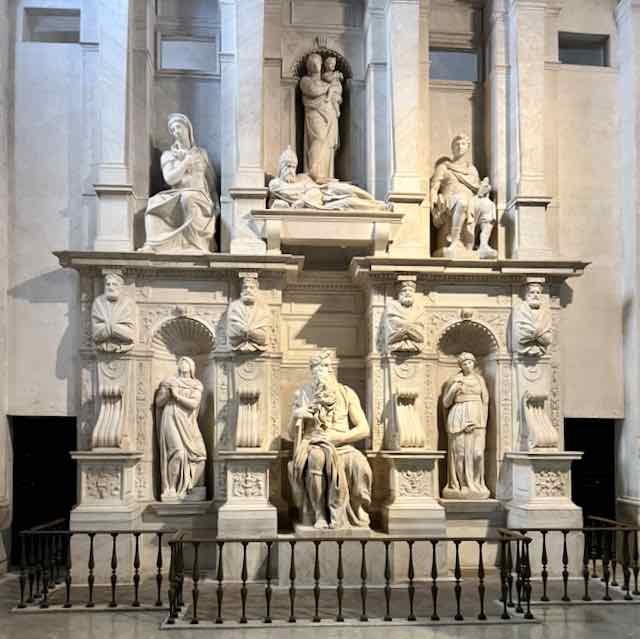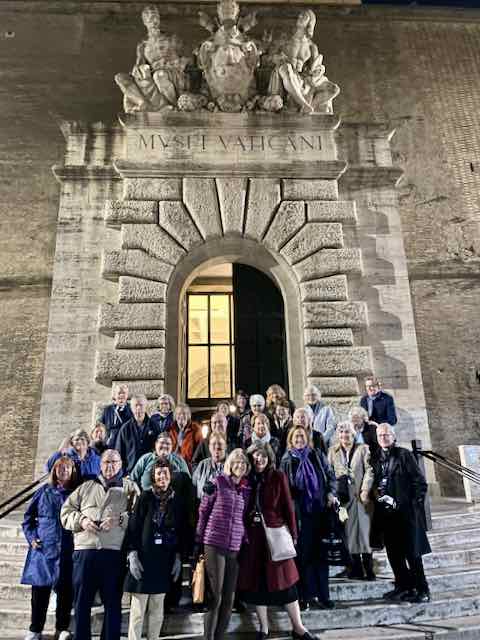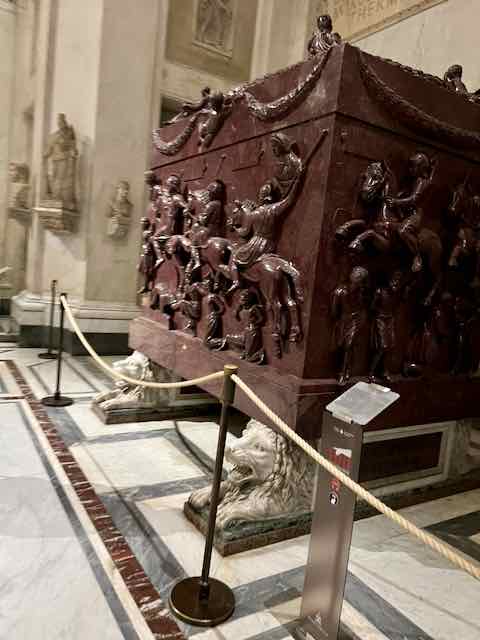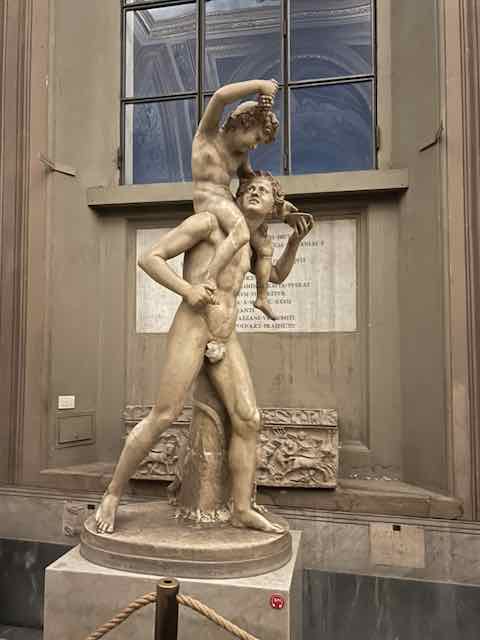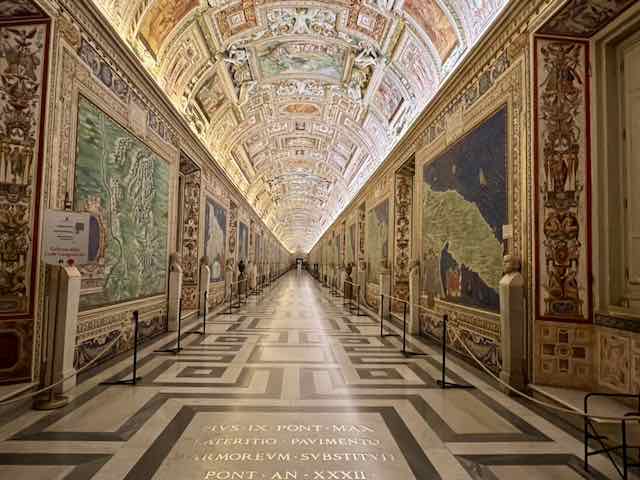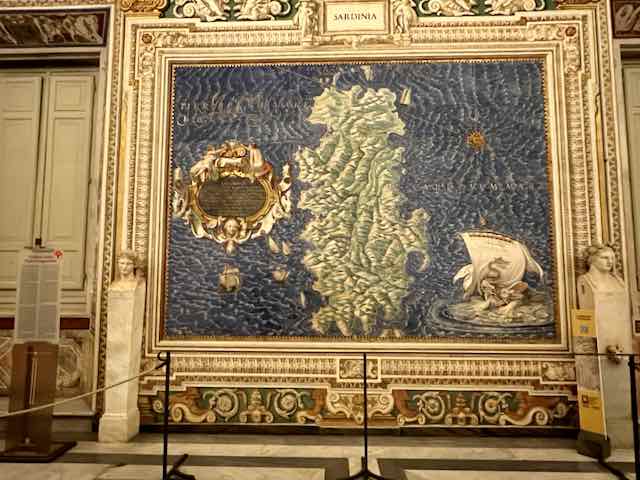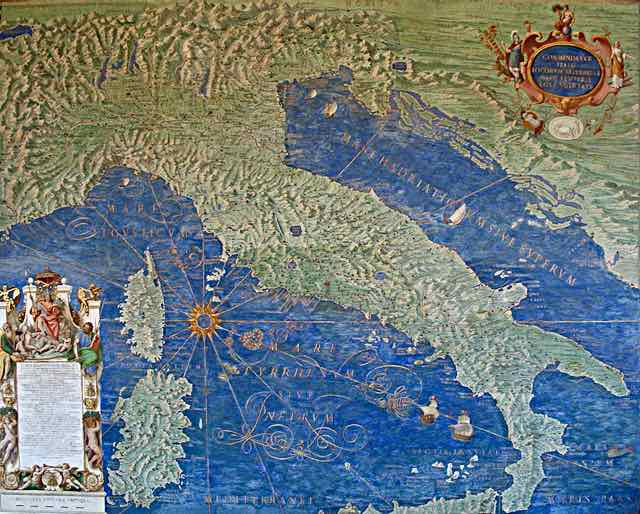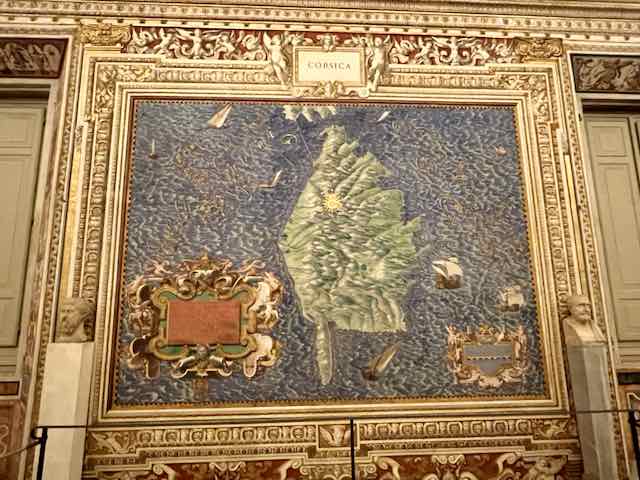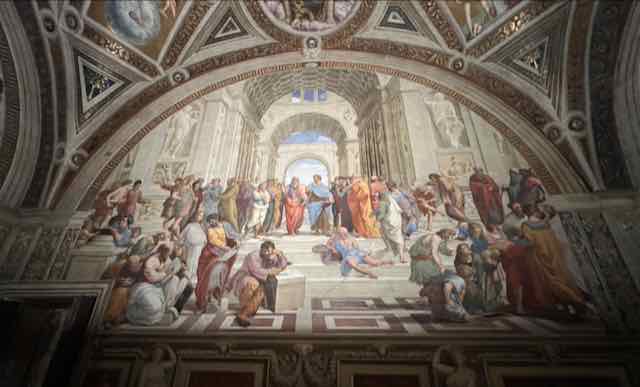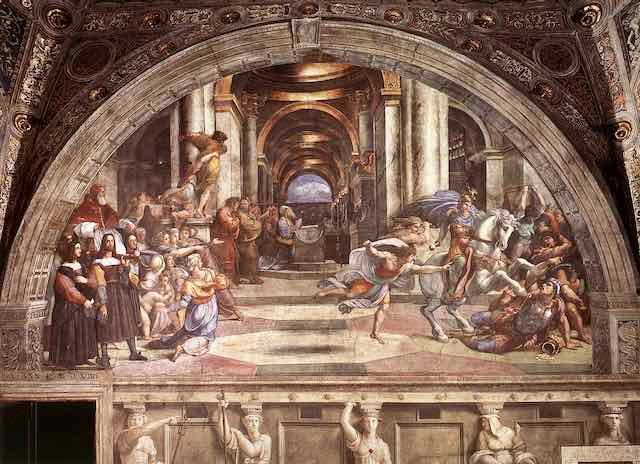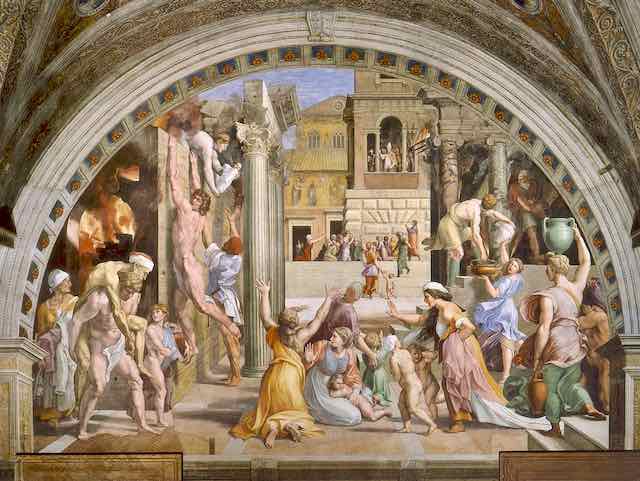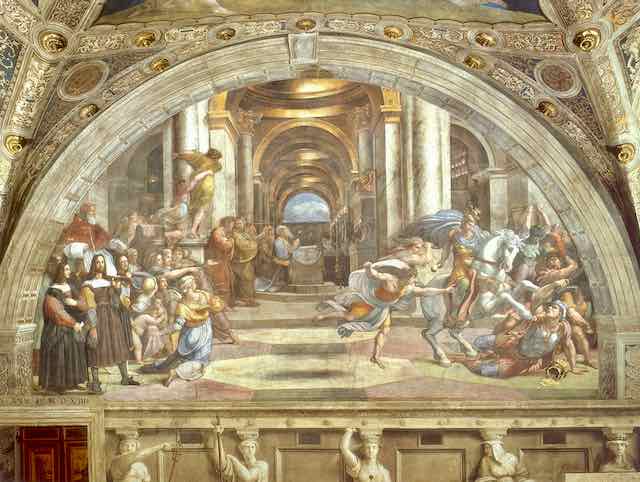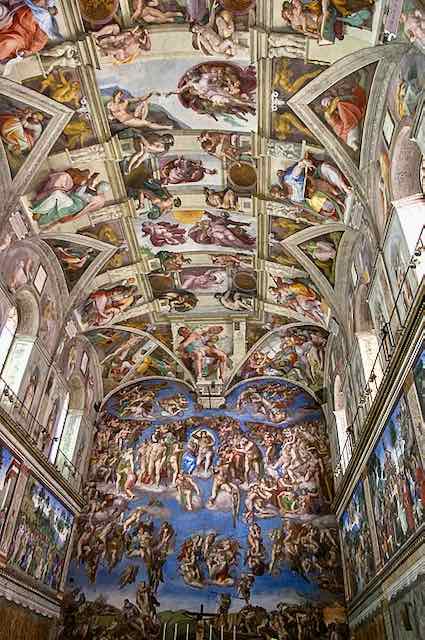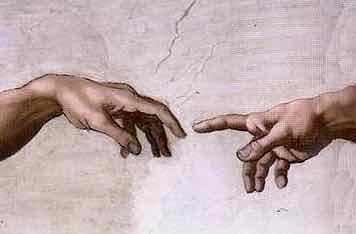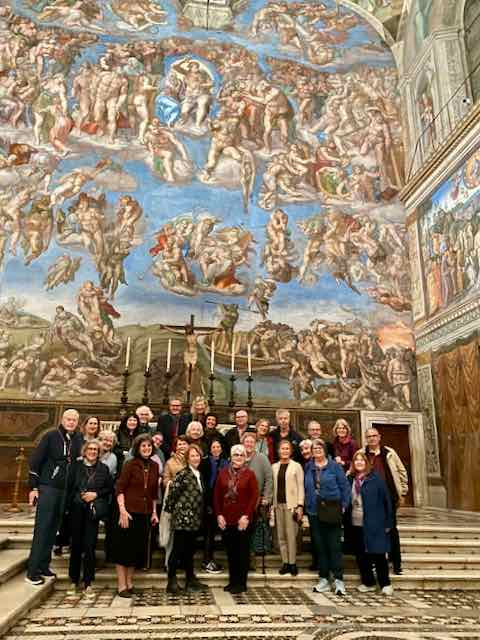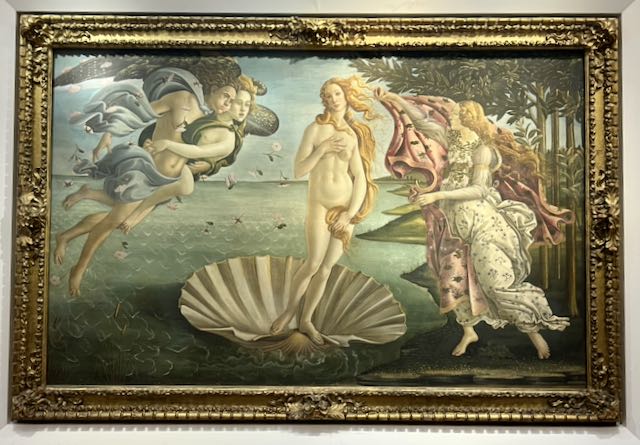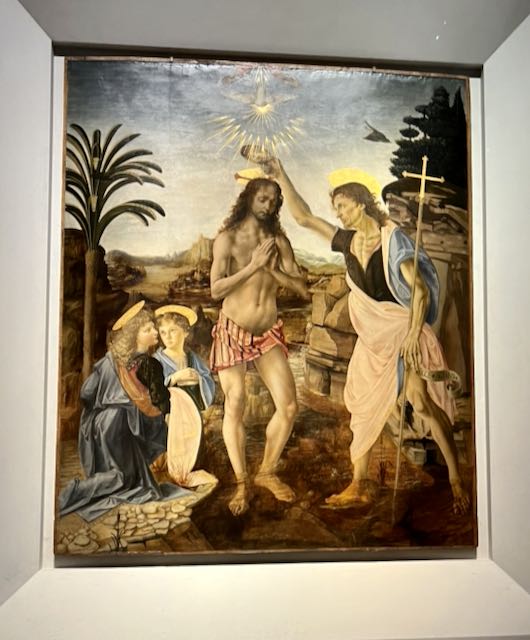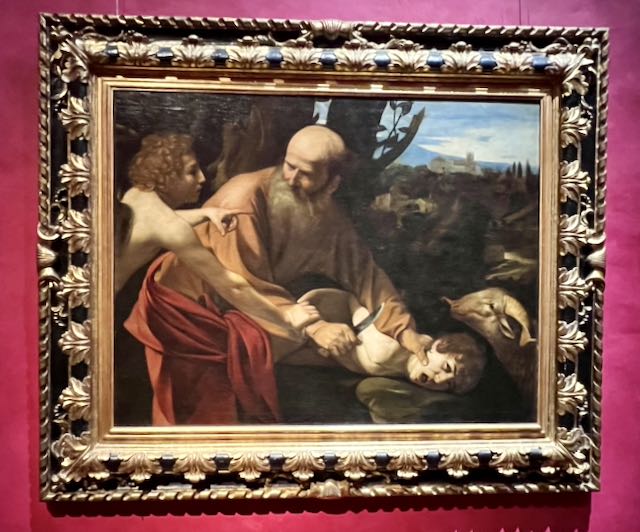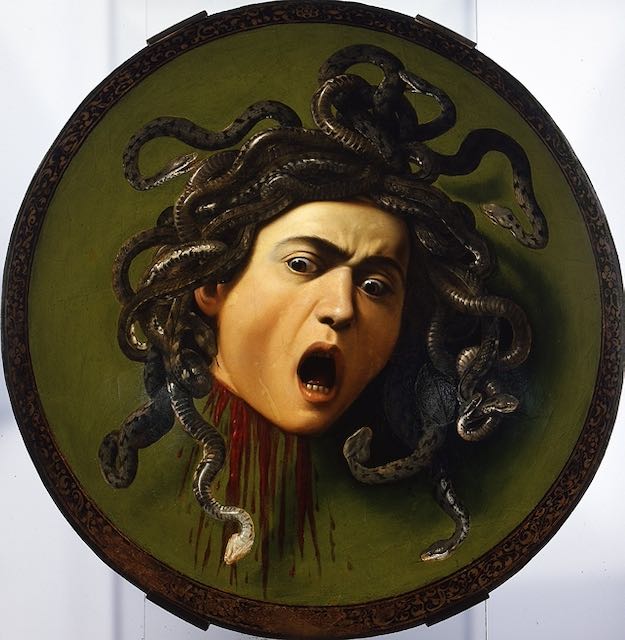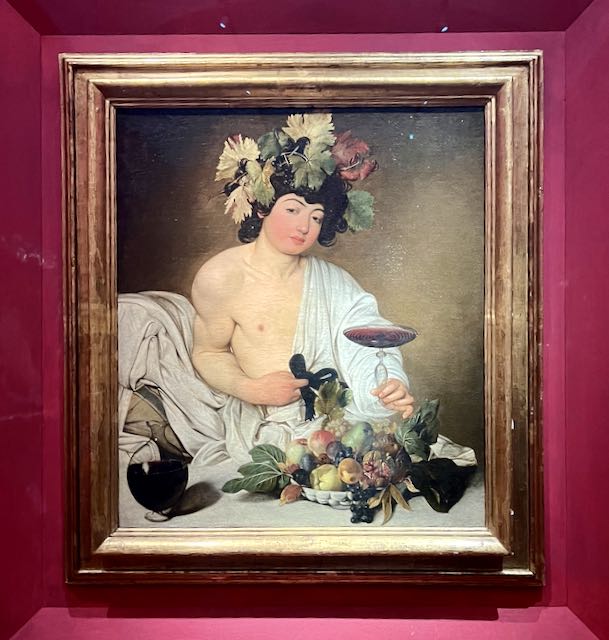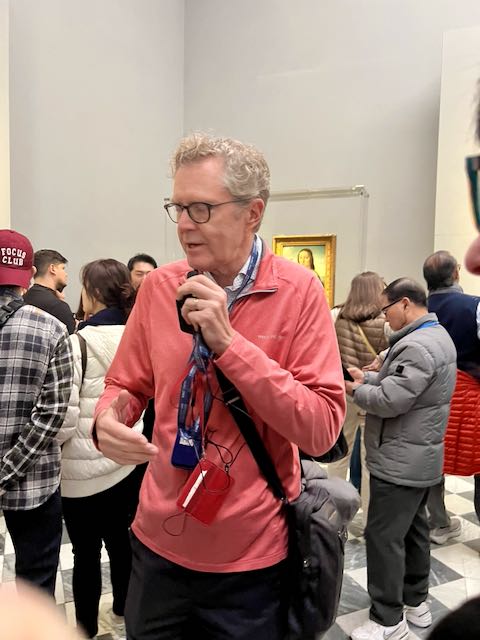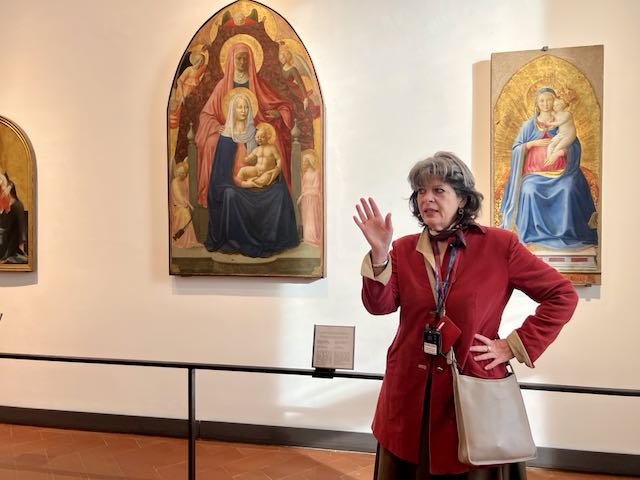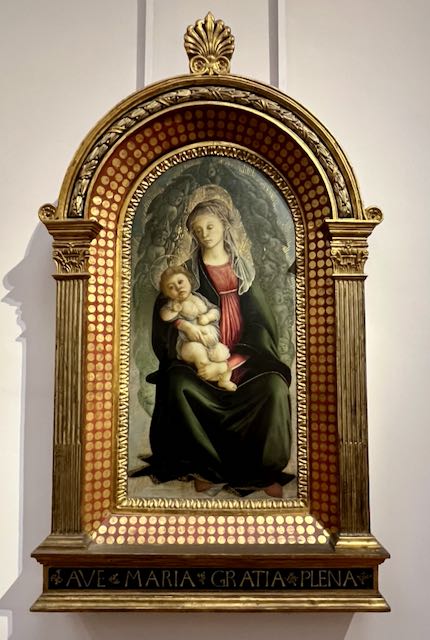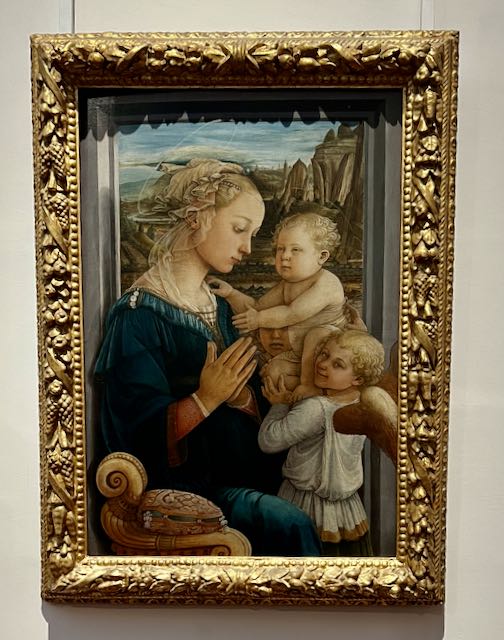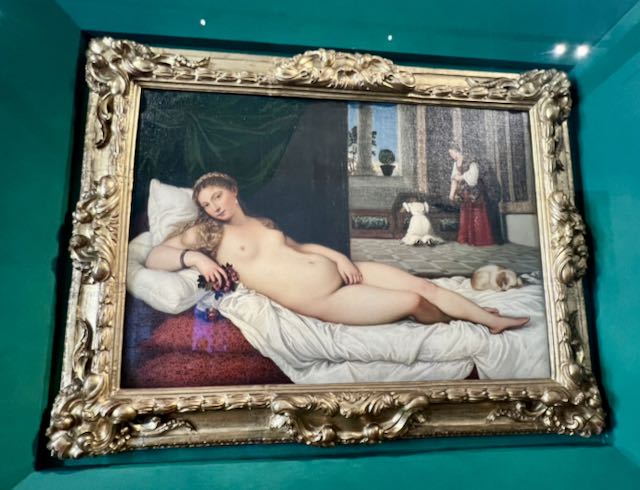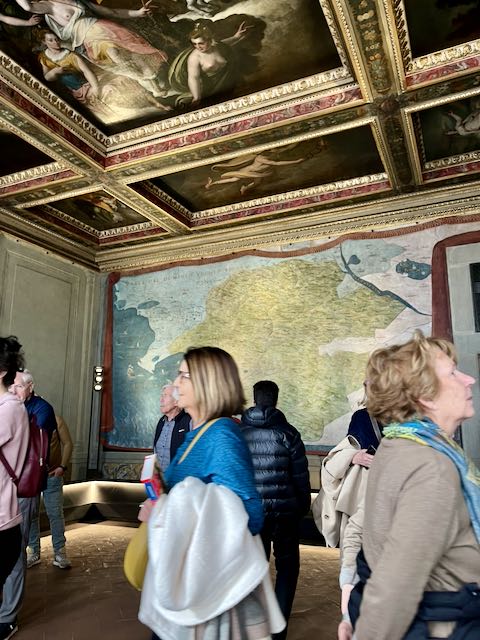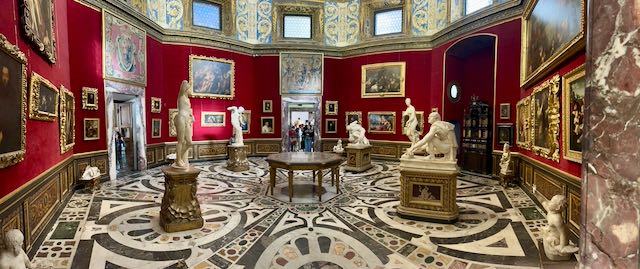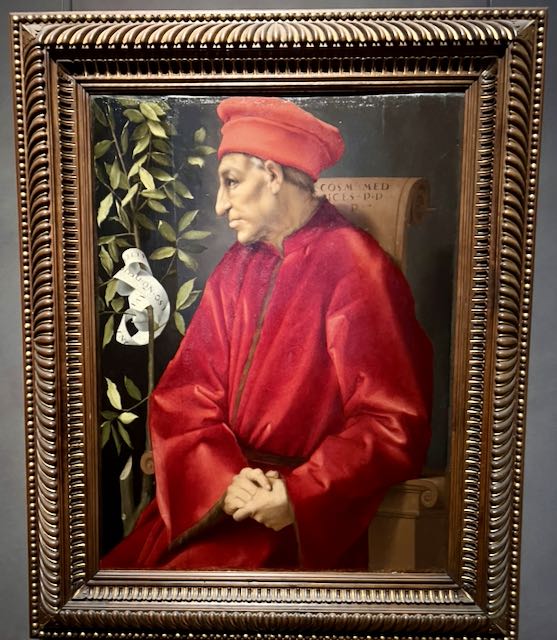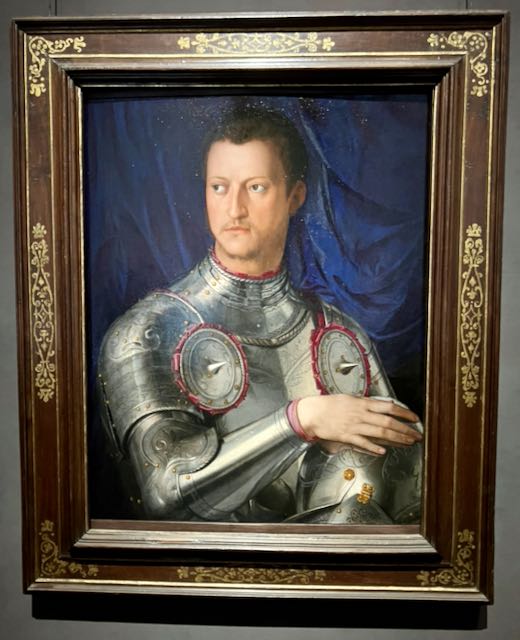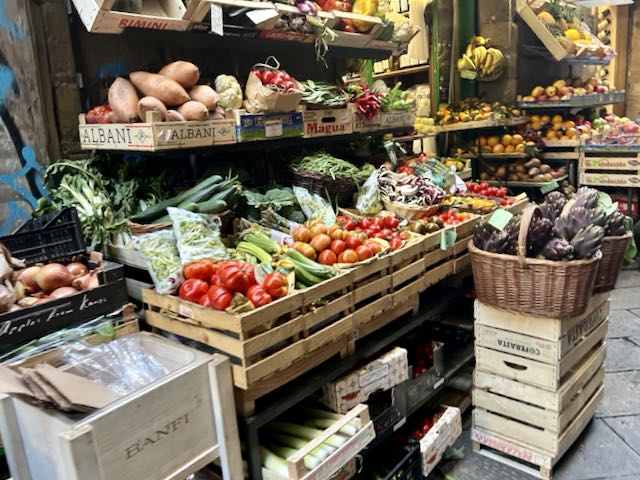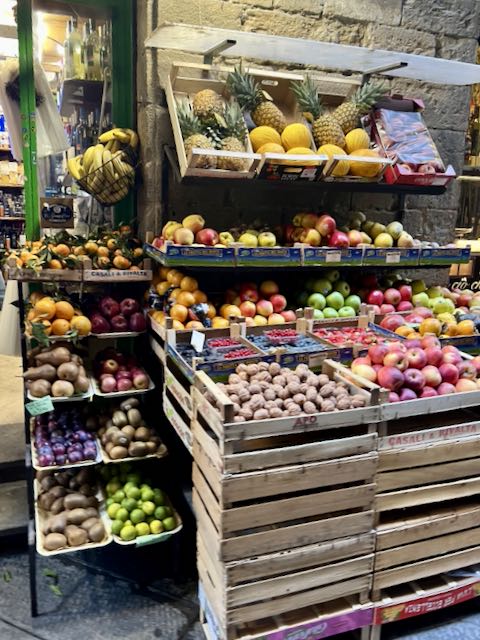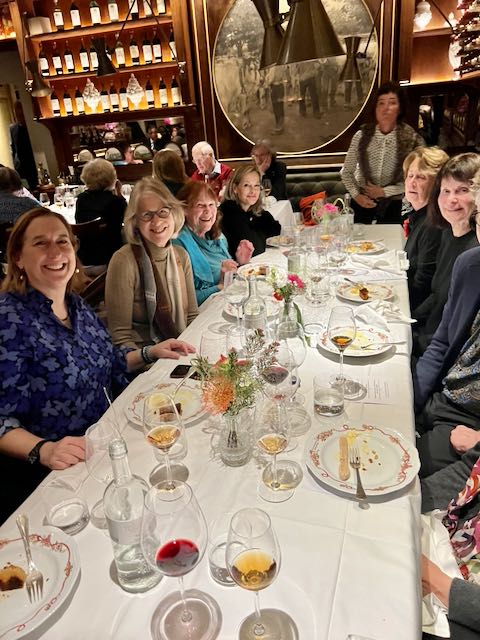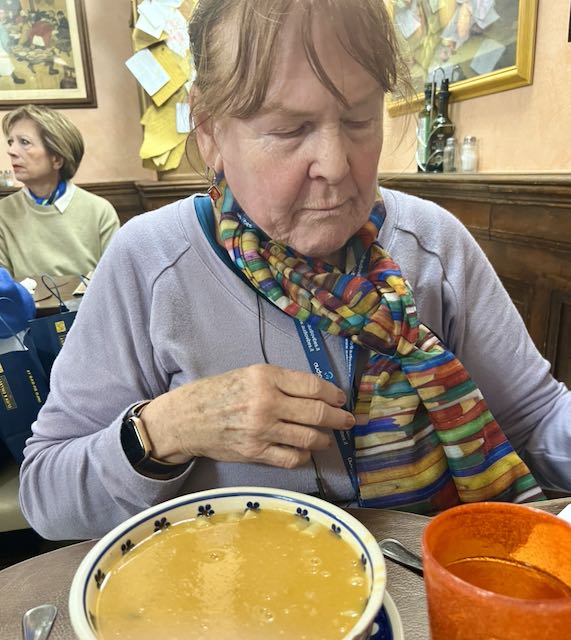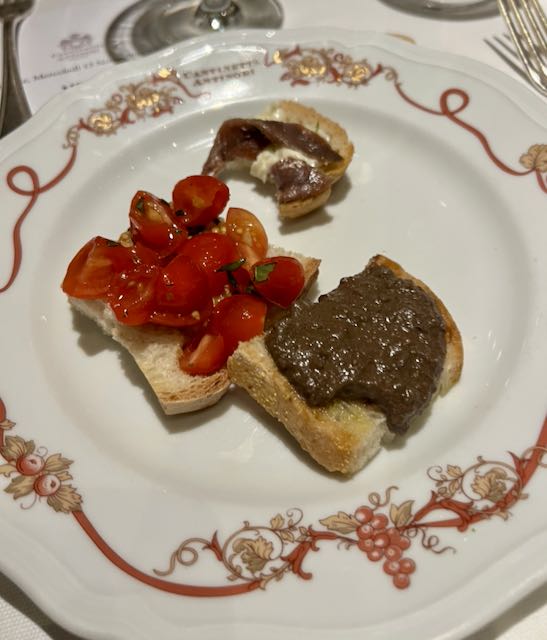A year ago, I knew absolutely nothing about a painter called Caravaggio. He lived a brief life, but had a huge impact. He was born in September 1571 and died in July 1610 but during those few years he had a major impact on the artworld. His paintings have been characterized by art critics as combining a realistic observation of the human state, both physical and emotional, with a dramatic use of lighting, which had a formative influence on Baroque painting.
Thanks to Elaine and her presentations, Art History Encounters, Janeen and I signed on for the adventure of “walking in the footsteps of Michelangelo and Caravaggio”. This started in Florence and ended in Rome and combined a whole lot of walking with learning about these two artists.
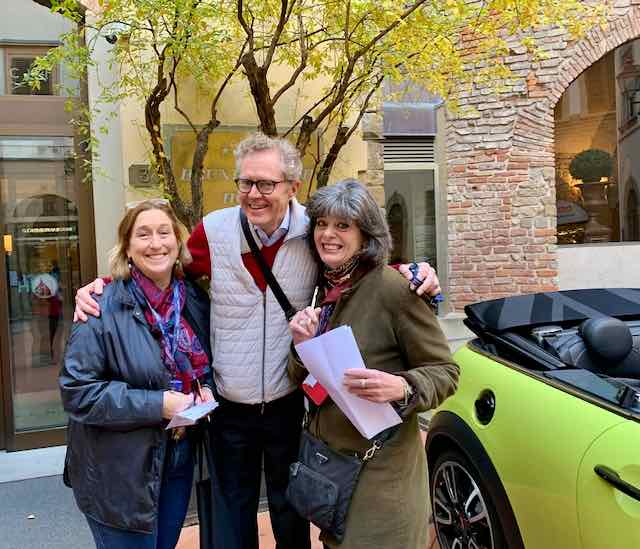
Elaine was accompanied by Ross King – both recognized Renaissance Art Historians well versed in both Michelangelo and Caravaggio. We started in Florence with a focus on early Michelangelo and then moved to Rome where we transitioned more towards Caravaggio (still with a bit of Michelangelo of course) and visited a variety of museums with fantastic collections.
On our final day, our visit to the Galleria Borghese and Doria Pamphilij was truly a treat. Works by Michelangelo and Caravaggio of course but also Bernini, Titian, Raphael and many others.
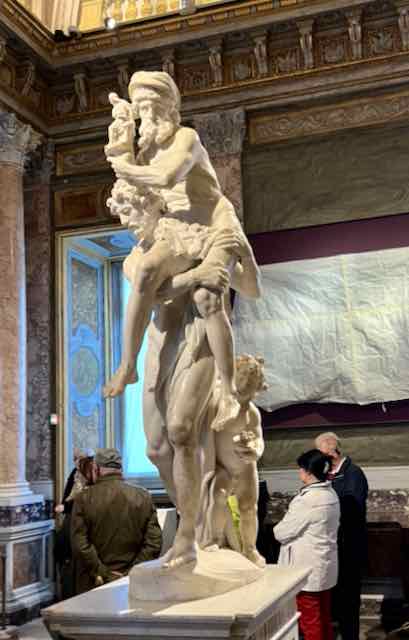

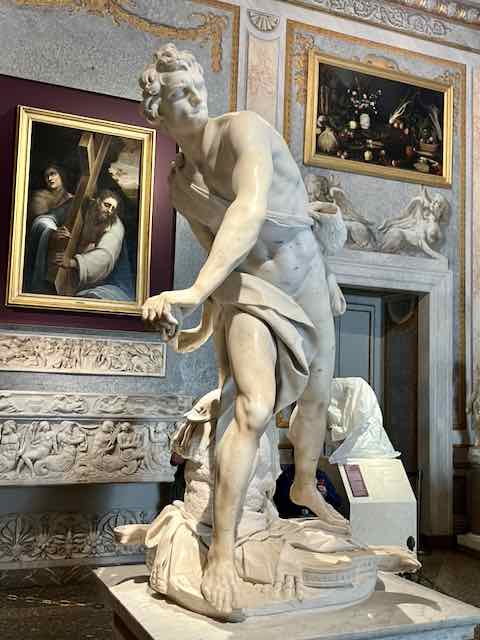
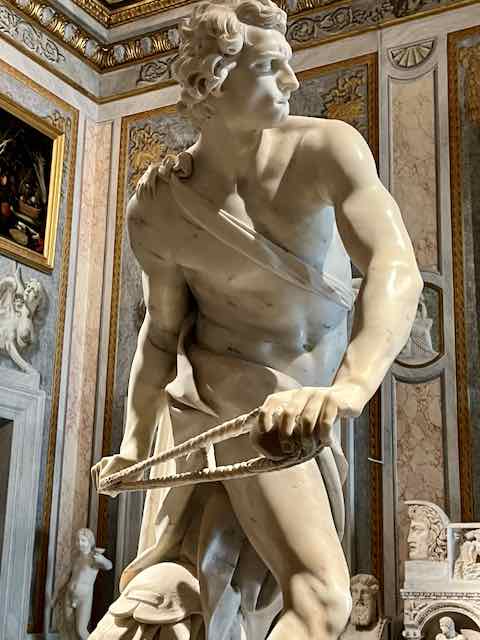
Bernini – David a couple of shots. A very dynamic sculpture for sure
When you first walk into the Galleria Borghese, there is fantastic art at every turn. Look one way and you see paintings by Titian, look another way and see loads of sculptures by Bernini, walk down any corridor and there are significant works of art all over the walls. It is almost impossible to pick out highlights – there are just so many of them to highlight. A few are represented in the various pictures in this blog.
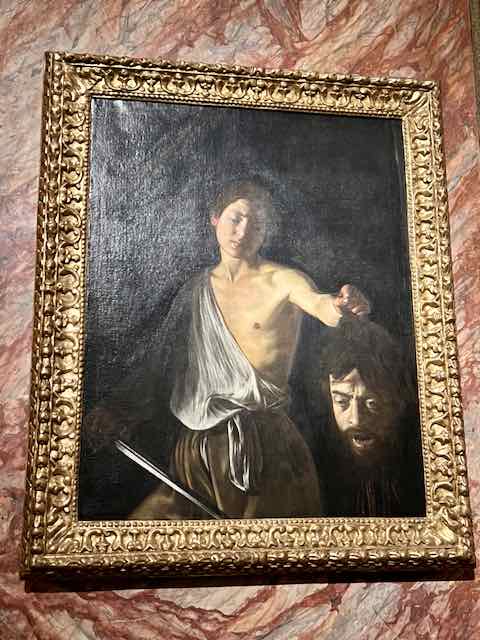
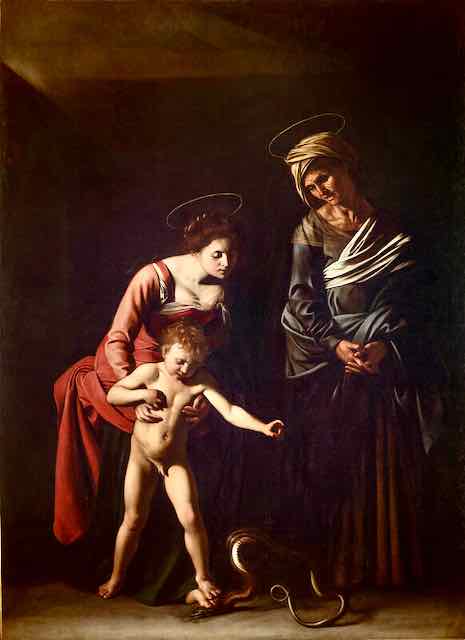
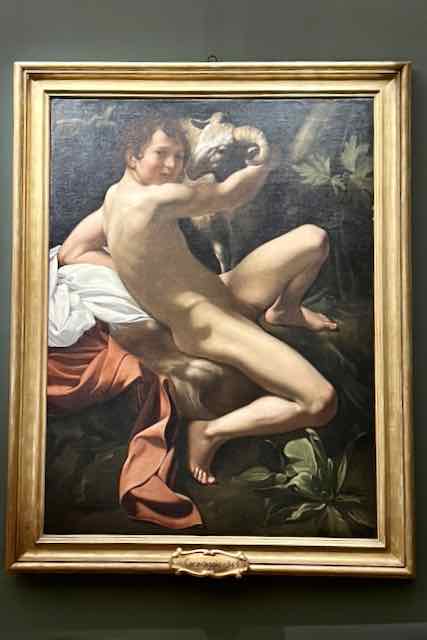
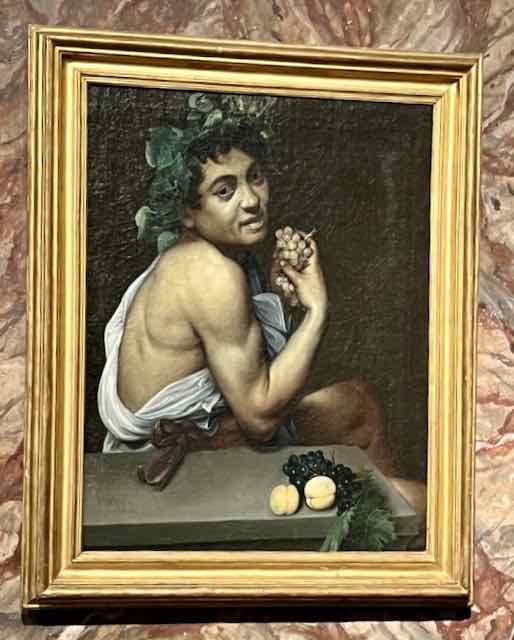
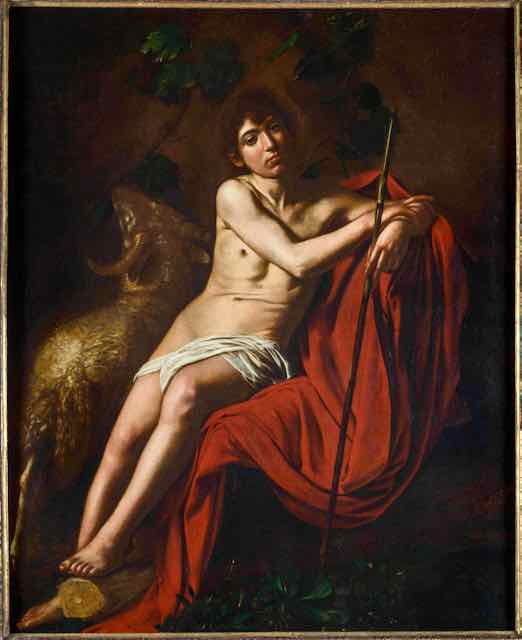
A few Caravaggio paintings First row: David with the head of Goliath, Madonna of the Grooms and Saint John the Baptist; Bottom – Self portrait as Bacchus (sick Bacchus) and Saint John the Baptist
In addition to the massive number of paintings, there are multiple sculptures by Bernini – many situated in the specific room they were designated to be when created. I can certainly see that I have to get back to the Borghese to walk through another time just to see all the items I missed!
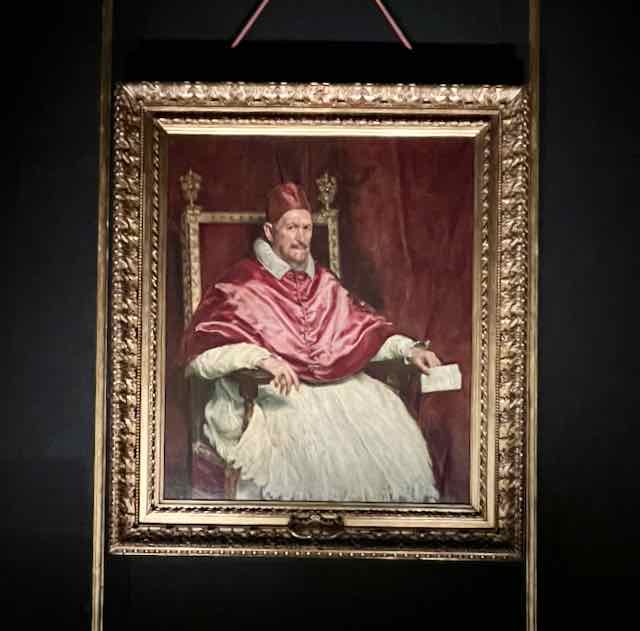
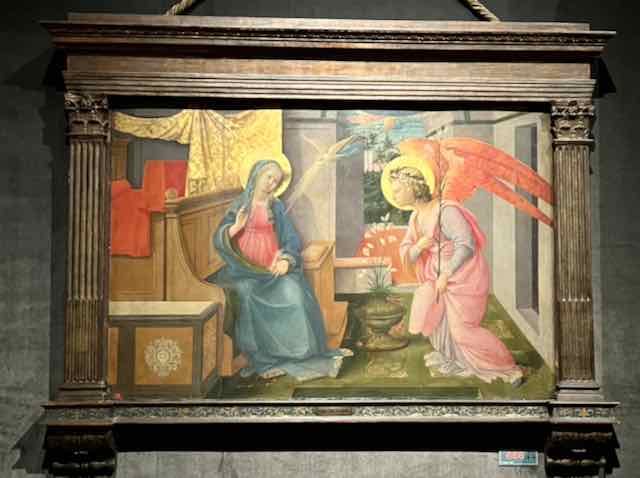
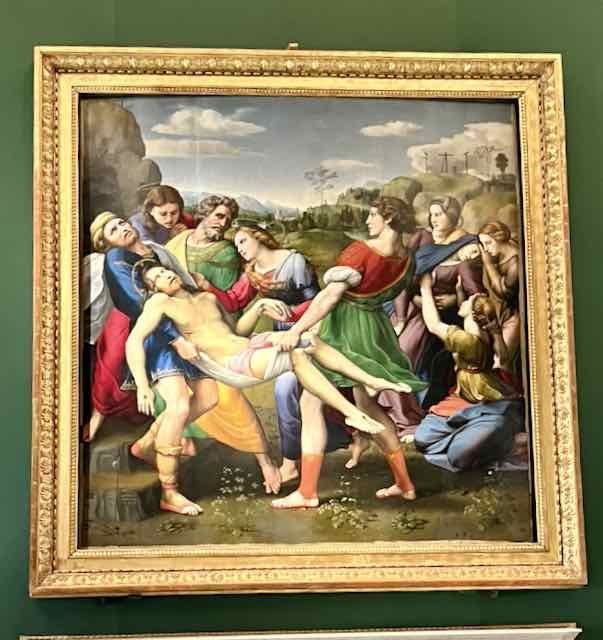
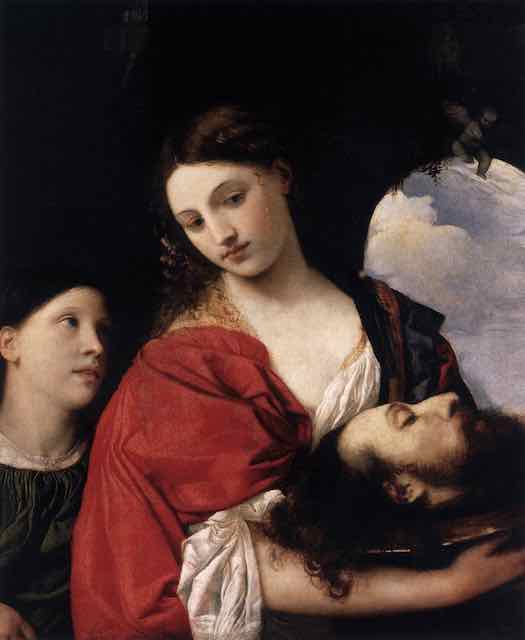
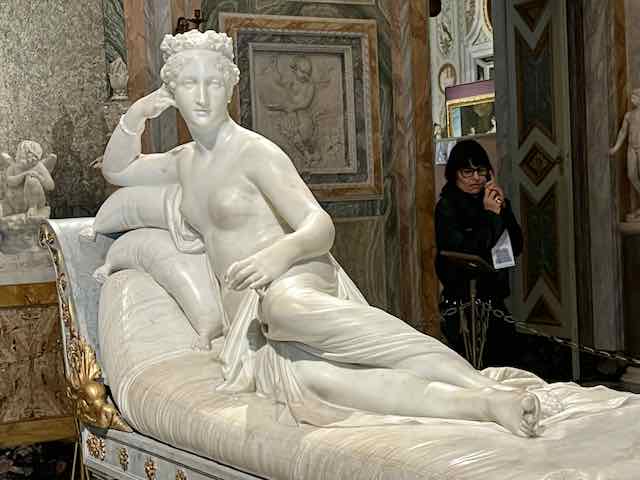
Top: Diego Velázquez, Portrait of Innocent X, Filippo Lippi, Annunciation (c. 1445–1450) and Raffalello – Deposition. Bottom Titian, Salome (c. 1515) and Venus Victrix – Antonio Canova(modeled by Napoleon’s naughty sister)
Our final stop of the journey was to the Doria Pamphilij. This very large private art collection housed in the Palazzo Doria Pamphilj and contains a large collection of paintings, furniture and statuary that had been assembled since the 16th century by the Doria, Pamphilj, Landi and Aldobrandini families now united through marriage and descent under the simplified surname Doria Pamphilj.

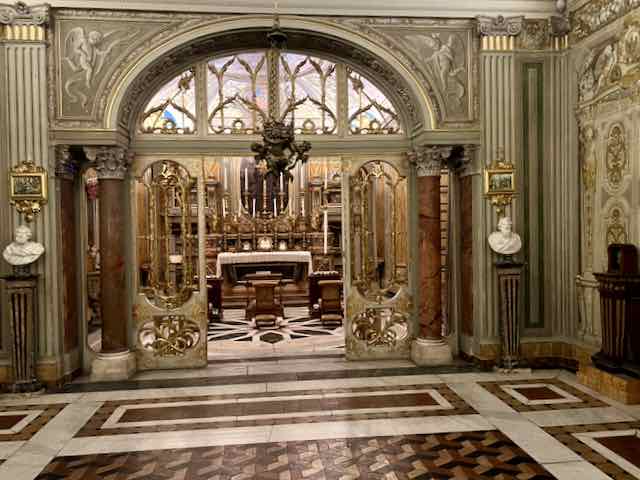
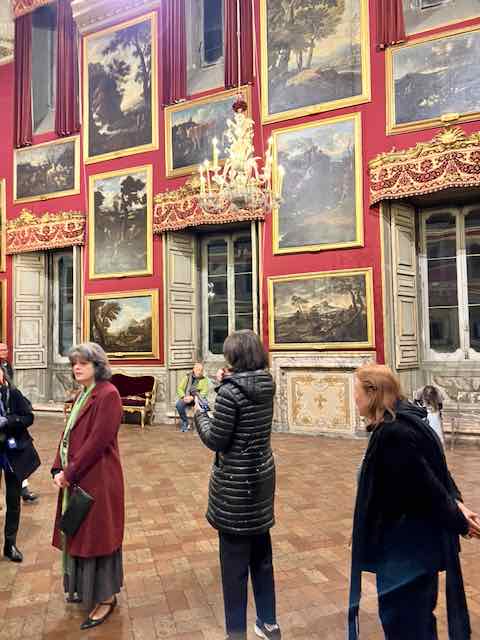
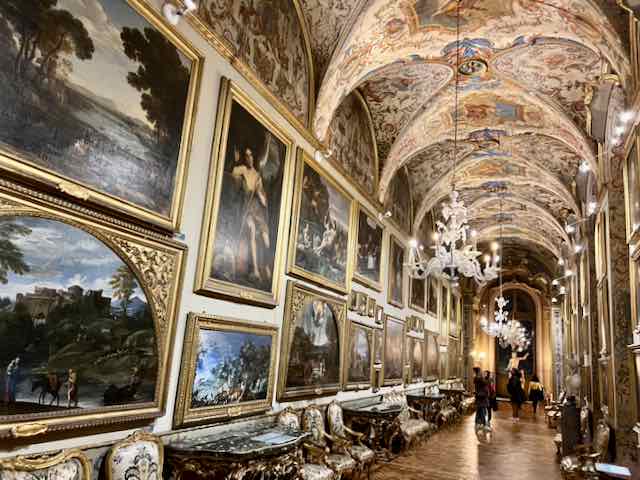

Beautiful views everywhere you look!

The Palazzo has grown over the centuries; it is likely to be the largest in Rome still in private ownership. The main collection is displayed in state rooms, including the chapel, complete with the mummified corpse of the family saint. However, the bulk is displayed in a series of four gilded and painted galleries surrounding a courtyard.
After touring the various galleries, we had a private dinner in one of the grand salons. It was truly a remarkable place to end of our tour with Elaine and Ross.
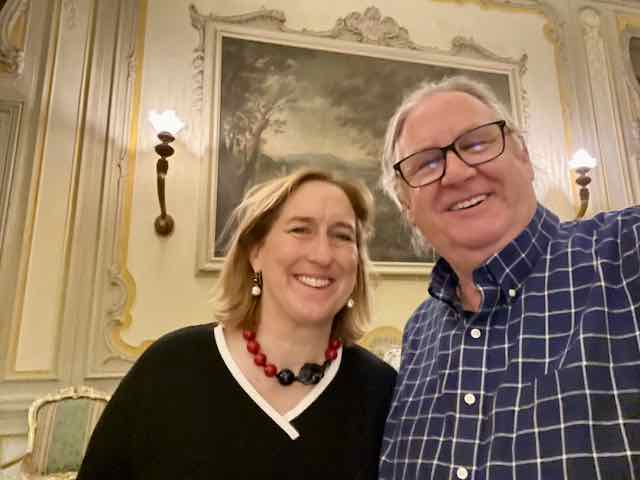
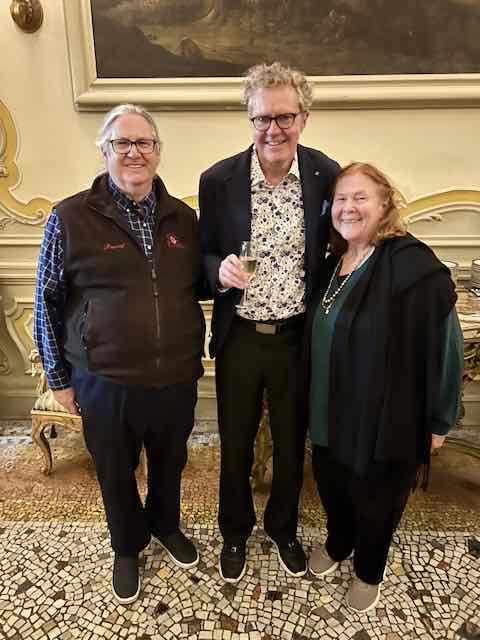
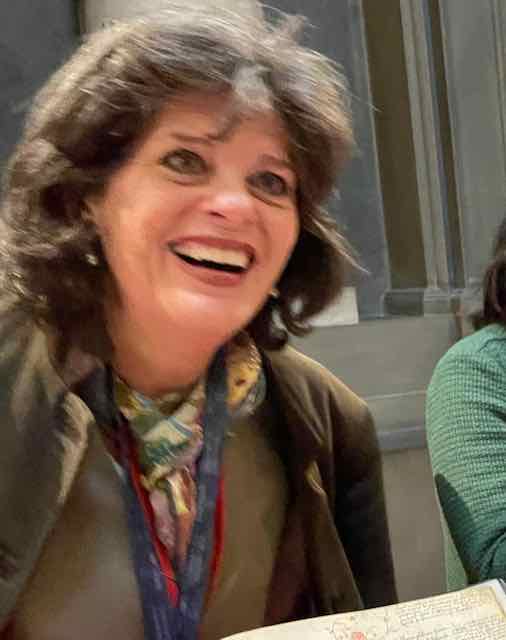
Elizabeth and David, David, Ross and Janeen and Elaine with her “Happy Face”
Over the course of the last 8 days or so, we have seen a whole range of works of art that we continue to discuss and review. I have lost count of the number of things Michelangelo did – sculptures, paintings, architecture but I (David) have to say the Laurentian Library in Florence was a major highlight. The difference between Michelangelo and Caravaggio is vast – but they both had a profound impact in their day. I cannot even begin to say which things we saw were our favorites – there was so much to absorb and enjoy.
A special thank you to Elaine Ruffolo and Ross King for putting this together and to Elizabeth Namack and Jennifer Hagg for all the coordination and efforts and guidance both before, during and after our tours.
Join Elaine each week when she does presentations on Sunday. Go to her website for more information.: https://www.elaineruffolo.com. And to learn more about more about Ross and all his great books, go to https://www.rosskingbooks.com
After Rome, we go to Germany, to connect with our family and friends to start a River Boat Christmas Market Cruise on the Rhine River starting in Cologne Germany stopping in France and ending in Basel Switzerland! Lots more to come, so keep connected and leave a comment!

